British Meat Recipe Corner

Someday, meat-eating will be seen as a historical curiosity, an unenlightened, counterproductive and tragic waste of the past. Man’s wanton carnivorous behavior – and particularly agricultural torturous industrial processes from steroids to slaughterhouses – will be crammed into the dustbin of history to rest alongside ritual sacrifice, slavery, gender inequality and smoking tobacco.
And like these other notions which debased our very humanity itself, enlightenment will come through, quite simply, a superior morality – a humane morality for the future, if you will – and a righteous militant attitude today. As George Bernard Shaw once put it, “It seems to me, looking at myself, that I am a remarkably superior person, when you compare me with other writers, journalists, and dramatists; and I am perfectly content to put this down to my abstinence from meat. That is the simple and modest ground on which we should base our non-meat diet…”
This is the philosophy driving BritishMeat.org.uk, a website plainly devoted to exposing the myths helping keep an unhealthy and cruel lifestyle alive in modern society. How strange will we seem to future generations who will see a wounded biosphere left in the wake of human greed.
One can understand the rise of human meat-eating through the spread of livestock domestication throughout Eurasia due to difficult living conditions, harsh seasonal changes and/or the concomitant utility of the beasts. Indeed, one reason given for the high proportion of vegetable matter to animal matter consumed is the sheer difficulty of the hunt. In areas of the Fertile Crescent, the hunting of beasts as well as the domestication of animals for food were practiced far less frequently, thanks to the bountiful lushness of the land and favourability of climate.
But in the 21st century? Advanced medicine combined with high technology including ever-speedier international transportation would appear to eliminate the need for the over-consumption of meat. Were fairer distribution practices in place, any person could have access to a nutritionally complete diet based entirely on vegetable matter. Even with an occasional splurge to tuck into the flesh of a dead animal, the radically reduced level of meat consumption would certainly eliminate the need for the large-scale livestock-processing operations that have barbarity and cruelty literally down to a science.
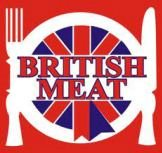
With heavy financial support backing Britain’s meat industry, social enlightenment will take some time. Far-ranging and high-publicised studies released by no less an authority than the National Health Service showing a link between diets high in red/processed meats and colorectal cancer are finally appearing to make a dent in overall British meat consumption in the 21st century but with so much propaganda encouraging citizens to eat meat out of a sense of national pride (!), it seems this fight will ultimately be won by a future generation.
Meanwhile, here’s a list of bonus extra ingredients typically found in red meat for you to peruse over lunch: antibiotics (including but not limited to Amoxicillin, Ampicillin, Ceftiofur Hydrochloride, Enrofloxacin, Oxytetracycline, Sulfadimethoxine, Sulfamethazine and Tilmicosin); dioxin; fecal matter (rat and other); estrogen, progesterone and testosterone; synthetic estrogen, synthetic progesterone and synthetic testosterone; livestock innards; manure; pesticides (also herbicides, insecticides and larvicides); the meat by-product known as ‘pink slime’; sodium penabarbital; tranquilizers; and urine. Yummy! You can purchase your British meat online and pay for it in various UK online payment methods.
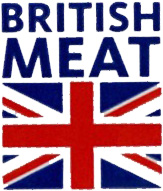
British meat traditions
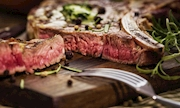
The traditionally-minded in Britain and much of the “West” who espouse the virtues of meat-eating as patriotic. Millennials generally and the occasional Generation X parent who raised them are more and more frequently scoffing at such dogma: Department for Environment, Food & Rural Affairs statistics show that overall consumption of meat and meat products in Britain in down 15.5% since year 2000 and 32% since 1980.
History of British meat/promotion of meat in British society
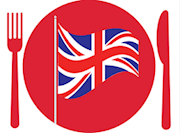
Today, proponents of meat products and/or the industry in general stake their emotional claims in a bedrock of British nationalism, arguing that the acting of eating meat is tied in with the very essence of Britishness. Beyond the dogmatic trappings and spurious logic of the Buy British Beef sort of supposition lies a central explorable truth, however: The history of British meat consumption is interwoven with that of the country itself.
Animal rights and the anti-meat movement

While Britain has quite a long and sordid history with over-consumption of animal flash products, one may take solace in England and Britain’s long history of countermanding the gaping maw of consumerism – and for a commendingly long time. The revolutionary idea that other beings on planet Earth actually might be given consideration vis-à-vis the right to, likesay, exist, can be traced back to Victorian England and some quite notable names from early 19th-century society.
Is being a vegan healthier?
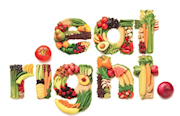
It’s a frequency asked question in online searches, and one destined to return vague answers full of “two sides” types of information and “debate.” Said considerations of the carnivorous-versus-vegan diet argument has been reduced to the typical state of any argument in the 21st century which could potentially be solved by science, namely the presentation of scientific evidence as debatable opinion.
See healthy recipes here : dietetiquebienetre.fr
Meat and Fat
Fatty red meat and meat products are often cited as major contributors to excessive fat and particularly saturated fatty acids in the diet and it is not unusual for health professionals to tell people to cut down on meat in order to cut their fat intake. However, over simplistic advice that fat reduction can be achieved by simply eating less red meat is unnecessary and incorrect and, in the light of recent evidence, outdated.
Fat intakes
There are many sources of fat and saturated fatty acids in the diet (eg cakes and pastries). Indeed the National Food Survey has estimated that red meat and meat products contribute only 22.4 per cent of the total fat in the average diet. Many people trim the fat off meat before cooking, reduce the amount of fat during cooking (eg by grilling or rack roasting) or simply cut off the fat on the plate. With most other foods the consumer does not have this opportunity to reduce the fat content of the food item. Because meat is cooked, the amount of fat eaten is usually less than the amount present before cooking. The National Food Survey which is used as a point of reference for dietary fat intake simply provides nutritional figures for food as purchased. Figures would be more meaningful if they related to food as consumed.
Fat content of meat
Some of the misconceptions about meat result from out-of-date food table data which tend to over estimate the fat content of meat and in turn distort dietary fat intake figures. The standard UK food tables (Holland et al, 1991) include information on meat and meat products which is now 20 years out-of-date. An average pork chop bought in the 1950s would have had a fat content of 30 per cent (untrimmed).
Supermarket Lean Meats
As a result of breeding development, feeding practices, butchery methods and trimming, the fat content can on average be decreased to 4 per cent in a pork loin chop. (Recognising this dramatic fat reduction, the 1994 COMA report classes pork together with poultry in terms of fat content.)
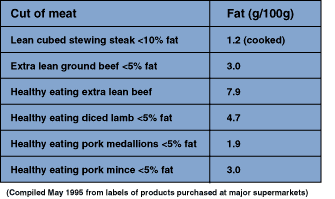
Pork chop - change in fat content
The changes seen with pork chops illustrate the different processes through which the fat content of meat has been modified, to meet today’s consumers’ needs.
Contrary to popular belief, not all the fat in meat is saturated (the type which may increase blood cholesterol levels). Over half the fat in lean beef and pork is unsaturated. Most of this is mono-unsaturated and pork also contains 15 per cent polyunsaturated fats.
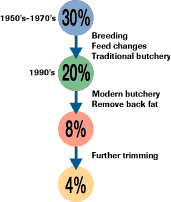
Fat and fatty acid composition of some red meat cuts
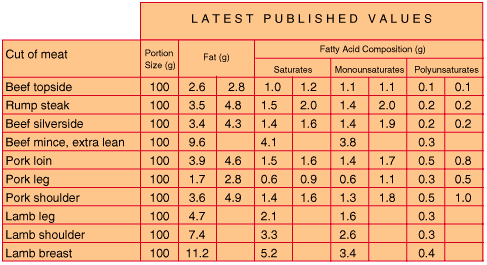
Two recent reports show that the amount of fat in some red meat cuts is lower than previously published.
Until recently, monounsaturated fatty acids were thought to be fairly neutral in their effect on blood cholesterol, but there is now evidence to suggest that they may also lower it (British Nutrition Foundation, 1994). Red meat is one of the main sources of monounsaturated fatty acids in the British diet. These are the main fats associated with a “Mediterranean type diet”. The COMA report (1994) recommends that care needs to be taken in the choice of foods reduced in an attempt to cut down on saturates so that a reduction in monounsaturates does not also occur.
Contribution to the different fatty acid intakes in the British diet by the main food groups
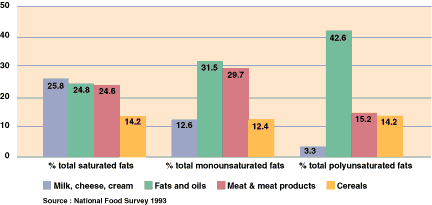
COMA on fat
In a new departure from previous COMA reports, the COMA report on cardiovascular disease (1994) provides a section specifically on foods and this discusses the options for dietary change. The recommendations in the report imply a reduction in national per capita average consumption for total fat of around 15g per day, and for saturated fatty acids of around 11g per day. The report gives many examples of “food swaps” including exchanging 1 pork chop, lean and fat grilled for 1 pork chop, lean only grilled which gives a fat saving of 19g per portion and a saturated fatty acid saving of 7g per portion. However, this is based on McCance and Widdowson composition data (Holland et al, 1991). When updated composition figures are used, the fat saving achievable is even more impressive (see diagram). This is because pork has become significantly leaner over the last twenty years with the fat content falling by a third on average.
Meat is an important source of many essential nutrients all of which are found in the lean part. So, unlike many foods, it is possible to cut off the visible fat without losing any of the nutritional benefits. Today the lean part is relatively low in fat.
Meat and nutrients
Red meat makes a contribution to vitamins and minerals in the diet as well as being an excellent source of protein.
In addition to iron, meat contributes to the dietary intake of other essential minerals such as zinc, copper, manganese and selenium, all of which help towards healthy body functioning. They are also much more readily absorbed from meat than from plant foods. All red meat, and beef in particular, is an excellent source of dietary zinc which is essential for growth, healing and a healthy immune system.
Meat is also an important source of B vitamins which are essential for metabolic reactions in the body. Vitamin B12 is not naturally found in cereals, fruit or vegetables. Vitamin B6, niacin, thiamin (vitamin B1) and riboflavin (vitamin B2) are all found in useful amounts in red meat. Pork (and therefore all ham and bacon as well) is a good source of thiamin. Liver and other offal meats are also good sources of vitamin A.
What the experts say
Lean red meat is healthy and nutritious and has an important role to play as part of a balanced diet. Here’s what some of the experts have to say:
Nutrition Task Force
“Lean meat plays, and should continue to play, an important part in the national diet.”
“Eat Well” - Nutrition Task Force, 1994
Family Heart Association
"There are many misconceptions about meat, not least about its fat content. Meat is much lower in fat than many people suppose, but opt for lean cuts, trim any visible fat and use low fat cooking methods. Lean meat (trimmed of all visible fat) typically contains less than 10% fat of which only half is saturated, the rest is largely monounsaturated plus some polyunsaturates.
There are now many new very lean cuts of meat on the market which contain even less fat - between 3 and 5%."
Dr Michael Turner - Family Heart Association, 1995
Dr Hilary Jones
“A patient of mine, recovering from a heart attack was terribly depressed at the thought of having “a boring life-long diet” imposed on him by the specialists. He soon perked up again when told he could still look forward to lean cuts of red meat however. When discussing diet with my patients in the surgery, I am amazed at the extent to which they misunderstand the nutritional benefits of eating meat. At home, we make sure the children eat healthily. We want them to have a tasty, varied and concentrated source of protein, vitamins and minerals (particularly iron) within a balanced diet. So we regularly enjoy beef, lamb, pork and poultry.”
Dr Hilary Jones - GMTV and SunDay magazine doctor
Scottish Heart and Arterial disease Risk Prevention - SHARP
“SHARP is pleased to endorse the message that lean red meat can be enjoyed as part of a low fat diet.”
Royal College of Nursing
“We are concerned about the incidence and effects of iron deficiency in the population generally, and in particular among women of childbearing age, teenagers and toddlers and we are alerting our members to this information.”
Sue Hinchliff - Vice Principal, Royal College of Nursing
British Dietetic Association
“Lean meat can be a nutritious part of a healthy varied diet.”
Jane Eaton - Chairman of the British Dietetic Association
British Nutrition Foundation
“Red meat is a good source of iron which the body can easily absorb. It is also a good source of other important nutrients such as zinc and protein, and it is reassuring to note that the fat content of red meat has reduced over the last few years.”
Health Promotion Wales
“Meat can play an important role in a healthy diet.”
